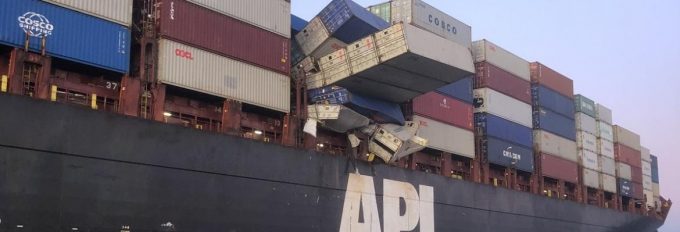CMA CGM set to takeover Air Belgium following court approval
CMA CGM has confirmed it is aiming to take over Air Belgium, after a court ...

The vessel APL England has been detained in Australia over inadequate lashing, after losing 40 containers overboard off the coast of Sydney on Sunday.
After the vessel docked in the port of Brisbane, an inspection by the the Australian Maritime Safety Authority (AMSA) revealed lashing arrangements for cargo were “inadequate” and securing points for containers on the deck were “heavily corroded.”
AMSA general manager of operations Allan Schwartz said: “These findings constitute a clear breach of a requirement under SOLAS to ensure that ...
Amazon pushes into LTL for small package fulfilment and UPS does a u-turn
New senior management for DSV as it readies for DB Schenker takeover
Volumes set to 'fall off a cliff' as US firms hit the brakes on sourcing and bookings
Asian exporters scramble for ships and boxes to beat 90-day tariff pause
Temporary tariff relief brings on early transpacific peak season
'Tariff madness' will prompt renegotiation of ocean shipping contracts
Forwarders 'allowing the fox into the chicken run' by supporting 'hungry' carriers
Response to tariffs by Chinese importers may see extra costs for US shippers

Comment on this article